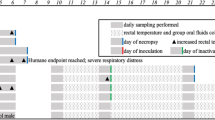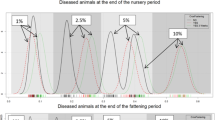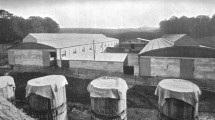Abstract
Despite improved diagnostic and rederivation capabilities, research facilities still struggle to manage parvovirus infections (e.g., mouse parvovirus (MPV) and minute virus of mice) in mouse colonies. Multi-faceted approaches are needed to prevent adventitious organisms such as MPV from breaching a barrier facility. In this article, the authors document recent changes to the Salk Institute's animal care program that were intended to help manage mouse parvovirus in the barrier facility. Specifically, the Institute started to use a new disinfectant and to give mice irradiated feed. The authors found an association between these modifications and a reduction in MPV incidence and prevalence in endemically infected colonies. These data suggest that using irradiated feed and appropriate disinfectants with contemporary management practices can be an effective plan for eradicating or controlling MPV infection in a research facility. The authors recommend further study of the environmental risk factors for parvovirus infection and of potential biological interactions associated with the use of irradiated feed.
This is a preview of subscription content, access via your institution
Access options
Subscribe to this journal
We are sorry, but there is no personal subscription option available for your country.
Buy this article
- Purchase on Springer Link
- Instant access to full article PDF
Prices may be subject to local taxes which are calculated during checkout




Similar content being viewed by others
References
Filipovska-Naumovska, E. et al. Serologic prevalence of MPV1 in mouse strains in a commercial laboratory mouse colony determined by using VP1 antigen. J. Am. Assoc. Lab. Anim. Sci. 49, 437–442 (2010).
Livingston, R.S. & Riley, L.K. Diagnostic testing of mouse and rat colonies for infectious agents. Lab Anim. (NY) 32, 44–51 (2003).
Pritchett-Corning, K.R., Cosentino, J. & Clifford, C.B. Contemporary prevalence of infectious agents in laboratory mice and rats. Lab. Anim. 43, 165–173 (2009).
Clifford, C.B. & Watson, J. Old enemies, still with us after all these years. ILAR J. 49, 291–302 (2008).
Institutional approaches to the control and eradication of MPV. Panel discussion. American Association for Laboratory Animal Science 60th National Meeting. Denver, CO. 8–12 November 2009.
US Department of Health and Human Services. Biosafety in Microbiological and Biomedical Laboratories 5th edn. (US Government Printing Office, Washington, DC, 2007).
Smith, P.C., Nucifora, M., Reuter, J.D. & Compton, S.R. Reliability of soiled bedding transfer for detection of mouse parvovirus and mouse hepatitis virus. Comp. Med. 57, 90–96 (2007).
Besselsen, D.G., Wagner, A.M. & Loganbill, J.K. Effect of mouse strain and age on detection of mouse parvovirus 1 by use of serologic testing and polymerase chain reaction analysis. Comp. Med. 50, 498–502 (2000).
Lee, H., Purdy, G.A., Riley, L.K. & Livingston, R.S. Efficacy of disinfectants against MVM- and MNV-contaminated surfaces. J. Am. Assoc. Lab. Anim. Sci. 46, 94–95 (2007).
Caulfield, C.D., Cassidy, J.P. & Kelly, J.P. Effects of gamma irradiation and pasteurization on the nutritive composition of commercially available animal diets. J. Am. Assoc. Lab. Anim. Sci. 47, 61–66 (2008).
Conning, D.M. Evaluation of the irradiation of animal feedstuffs. in Recent Advances in Food Irradiation (eds. Elias, P.S. & Cohen, A.J.) 247–283 (Elsevier Biomedical, Amsterdam, 1983).
Macpherson, A.J. & Harris, N.L. Interactions between commensal intestinal bacteria and the immune system. Nat. Rev. Immunol. 4, 478–485 (2004).
Compton, S.R., Paturzo, F.X. & Macy, J.D. Effect of murine norovirus infection on mouse parvovirus infection. J. Am. Assoc. Lab. Anim. Sci. 49, 11–21 (2010).
Acknowledgements
We thank Amanda Chambers for her meticulous data management, Charles Clifford and Kenneth Henderson for invaluable insight into MPV testing strategies, UM RADIL for diagnostic support and Newco Distributors, Inc. for dietary data and excellent customer service.
Author information
Authors and Affiliations
Corresponding author
Ethics declarations
Competing interests
The authors declare no competing financial interests.
Rights and permissions
About this article
Cite this article
Reuter, J., Livingston, R. & Leblanc, M. Management strategies for controlling endemic and seasonal mouse parvovirus infection in a barrier facility. Lab Anim 40, 145–152 (2011). https://doi.org/10.1038/laban0511-145
Received:
Accepted:
Published:
Issue Date:
DOI: https://doi.org/10.1038/laban0511-145



